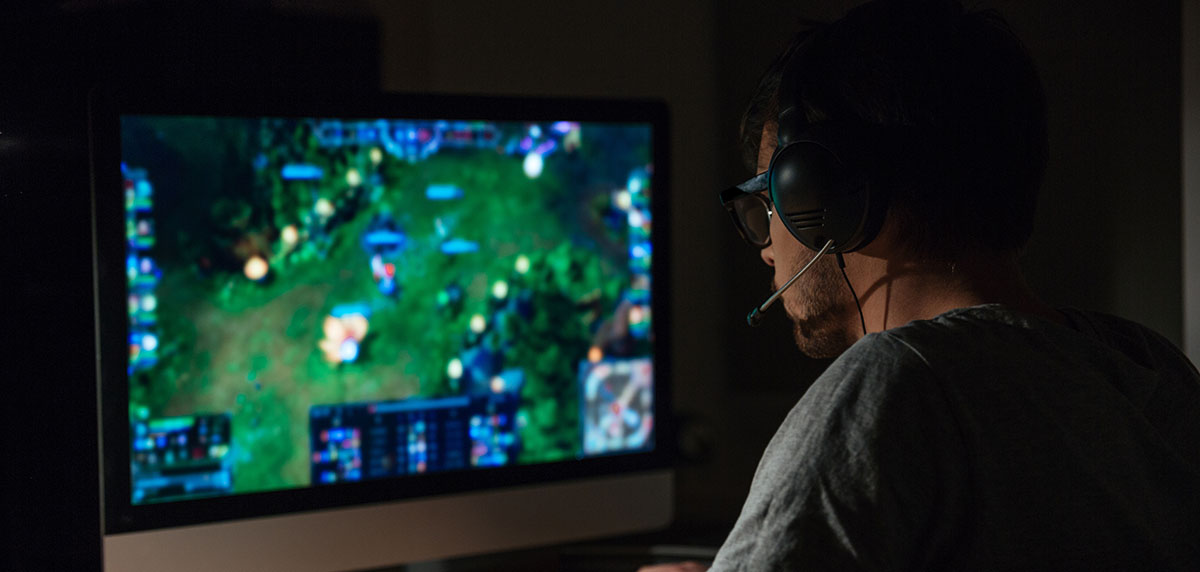Older generations that grew up playing Pac-Man and Galaga in neighborhood arcades may regard video games as a fun distraction. Even today, a surprising number of Boomers are still gaming (and have been since childhood), but prefer “casual” games like Angry Birds and Candy Crush. An even higher percentage of Gen Xers, who grew up with early gaming consoles like Sega and Atari, gravitate towards this new generation of casual games.
When it comes to Millennials and Gen Z, gaming preferences have changed dramatically. Many younger gamers more complex and involving “action” games, which range from first-person shooters like the Call of Duty franchise to arena-based team battles like League of Legends to the immersive worlds and characters of the Fallout and Skyrim series.
Red Dead Redemption 2, a recent game by prodigious developer Rockstar Games, allows players to inhabit an open world that simulates a microcosm of the late-period western American frontier with a level of gravitas and realism that the New York Times called “true art…richly cinematic and even literary.” The game earned $725 million during its opening weekend — a record yet to be broken by any entertainment product. It took a team of over one thousand elite developers, writers, and other personnel seven years to create, and features 300,000 animations and 500,000 lines of dialogue.
League of Legends, a multiplayer online battle arena (MOBA) game built and maintained by Riot Games, boasts over 100 million active players each month. Sixty million people watched the 2017 League of Legends World Championship, and the winning team brought home a purse of four million dollars.
We are now a long, long way from Pac-Man. These are not casual games in any sense. Gaming has become the realm of “cinematic, literary” experiences and multimillion-dollar professional competition, and our newest generations have adapted to this golden era of gaming by integrating video games deeply into their identities and daily lives. Leaders in both the workplace and marketplace should definitely pay attention.
Gamer identities in the marketplace
Gen Z currently wields $44 billion in buying power. Over the next two decades, about $68 trillion will consolidate in the hands of Millennials. In 2018, more people worldwide watched e-sports than either Major League Baseball or the National Hockey League. With 60% of Americans ages 18 to 29 playing video games, understanding games and gaming culture provides a fantastic advantage to leaders in branding and marketing.
Brands searching for a fresh take may find a gold mine in gaming. Natural players in the space like Intel — which builds the chips and other parts that make much of gaming possible — are ideal partners for brands that aren’t yet comfortable marketing to gamers. They already have years of experience advertising on platforms like Twitch and Discord, and they know what different gamer communities value and how they think.
Gaming influencers, like their counterparts on more conventional social media, have incredible access and clout with gamer communities—and yet older generations may not even know their name. They often achieve internet celebrity by streaming videos of skilled gameplay on popular titles and providing entertaining commentary. A particularly successful influencer named Tyler “Ninja” Blevins recently partnered with Red Bull to host an all-night gaming event in Chicago.
During a recent promotion, UberEats customers who are also Blevins fans got a one percent discount (with a 25 percent limit) on purchases for every “kill” Blevins got in-game before his UberEats delivery ordered arrived. The promo, originally planned to last three days, was too successful — UberEats reported maxed-out redemptions within just 24 hours.
In the current sea of marketing choices, it can be especially daunting to build credibility with Gen Z and Millennials. One way to start to bridge the generational divide is to break down stereotypes, such as gamers being only a certain age. In fact, 65% of American adults play video games! Most gamers exercise, vote, and get plenty of sleep. The average age of an American gamer is 33, and gamers are seven percent more likely than non-gamers to have a creative hobby. 46% of gamers are female.
The emergence of gaming is a huge opportunity to better understand and connect with both Gen Z and Millennials. At CGK, we are in the process of completing our annual State of Gen Z® study, which includes new insights about Gen Z and Millennial gaming.
Do you want to know how to incorporate the latest Gen Z and Millennial engagement or marketing trends into your brand or brand story? Contact us here and we can set up a phone call to see how we can be a resource to you.

